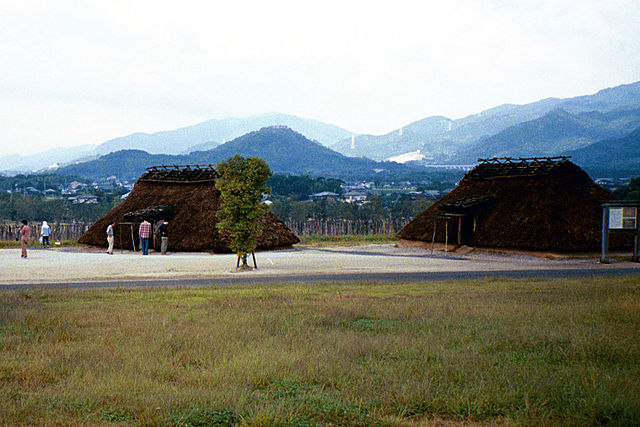
Yoshinogari Yayoi Village
Saga, Japan

|
Yoshinogari Yayoi VillageSaga, Japan |
The archaeological park at Yoshinogari, in northern Kyushu, is constructed on the site of an original Yayoi settlement (300 BC - 300 AD). The settlement was bounded by an inner and an outer moat; it contained more than 350 houses and over 2500 graves. See Barnes, p. 220 for an archaeological precis of the site.
Yayoi culture introduced new types of pottery, social organization, the cultivation of rice, and the use of ritual bronze implements to Kyushu. From there, it spread to the rest of Japan, displacing the earlier Jomon (10,000 BC - 300 BC) culture. It is possible that Queen Himiko, a shamaness/queen mentioned in an early Chinese chronicle, may have ruled a settlement like Yoshinogari around 250 AD.
The date of 300 BC for the beginning of Yayoi culture was established by pottery seriation in the 1960s. However, beginning in 2002, radiocarbon testing has pushed back the beginning of the Yayoi period to 800 BC or even earlier (with the oldest material at Yoshinogari itself dated to about 400 BC). Since the new Yayoi dates are still controversial, I have retained (at least so far) the "traditional" date of 300 BC on this website.

|

|